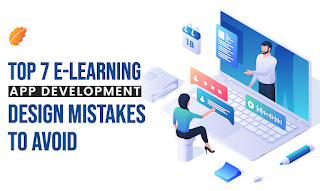How to Secure and Protect Your VR App Data and Privacy
As virtual reality (VR) app development solutions grow in popularity across industries like gaming, healthcare, education, and more, it's essential for developers to prioritize data security and user privacy. VR app development solutions collect sensitive user information and immerse users in digital worlds - making robust security measures crucial.
This guide dives into key strategies and best practices for securing your AR VR app development architecture, safeguarding user data, protecting privacy, and upholding reliability. By proactively addressing security and minimizing risks, you can build trust with users and avoid devastating data breaches.
Encrypt Sensitive Data End-to-End
End-to-end encryption should be implemented for all personally identifiable information (PII), financial data, healthcare records, or other confidential user data processed by your VR app development solution. Encryption converts data into coded form, requiring a cryptographic key to decipher and access.
Use industry-standard symmetric encryption algorithms like AES-256 to encrypt sensitive data files and databases. On mobile VR headsets, leverage built-in encryption features like secure enclaves. Transmitting encrypted data across networks keeps it secure even if intercepted.
Properly encrypted data is unintelligible and essentially useless without the decryption key. Even if your databases are compromised, encryption acts as an extra layer of protection against unauthorized access. Make sure to securely generate, manage, and store encryption keys.
Encryption should be enabled for data both at rest (stored) and in transit (being transmitted). Popular data transmission encryption protocols include TLS (HTTPS) for securing connections and VPNs for encrypting network traffic flows.
By making strong encryption central to your AR VR app development architecture, you can protect user data and comply with privacy laws like GDPR and CCPA.
Authenticate Users with MFA
To prevent unauthorized access to user accounts, implement strong user authentication requirements. At minimum, enforce unique user IDs and passwords with password complexity rules. But consider taking authentication further with multi-factor or two-factor authentication (MFA/2FA).
With MFA, users must provide two or more valid proofs of identity to log into their account. This adds an extra layer of account protection, even if a password is compromised. Common MFA factors include:
- Biometrics - Fingerprint, face, or iris scans
- One-time codes - Sent via email, SMS, authenticator app
- Security keys - Physical USB keys or NFC/Bluetooth tokens
- Knowledge factors - Personal questions/answers
MFA makes stolen credentials essentially useless to malicious actors without the secondary factor. For optimal security, opt for MFA methods like security keys which are resistant to phishing.
By keeping unauthorized users out of accounts, MFA limits access to sensitive user data. Make sure to avoid SMS or email based MFA which have vulnerabilities.
Limit Data Collection and Retention
To reduce your attack surface and compliance obligations, only collect the minimum user data necessary for your VR app's functionality. Clearly disclose what data is gathered and give users choices to limit optional data collection.
Set data retention policies to automatically delete old and unneeded user data after a fixed period. Avoid holding data indefinitely if not absolutely required. The less stale data accumulated, the smaller your risk exposure.
For analytics, aggregate or anonymize data to obscure individual identities. Obtain explicit user consent before re-purposing or sharing any collected data with third parties.
Following data minimization best practices demonstrates respect for user privacy while lowering security risks and costs. Appointing a privacy officer to oversee data practices can further ingrain privacy for any VR app development company.
Securely Transmit Data
All network communications containing sensitive virtual reality app development user data should be encrypted in transit between client devices, servers, APIs, databases, and internal services. Use VPNs to create encrypted tunnels or the TLS protocol (HTTPS) to encrypt connections.
TLS (Transport Layer Security) enables secure point-to-point encryption between two locations. For web and API traffic, TLS certificates should use at least 2048-bit encryption strength. To mitigate man-in-the-middle attacks, validate certificate chains and enable HSTS.
Keep SSL/TLS libraries and ciphers up-to-date. Avoid using outdated versions like SSLv3 or TLS 1.0 which have weaknesses. Properly configured TLS encryption will thwart surveillance and interception of data in motion.
Rigorously Test Security
Throughout your VR app's development lifecycle, rigorously test for vulnerabilities using techniques like penetration testing, risk assessments, static/dynamic analysis, fuzzing, and source code audits.
Identify and remediate any flaws or misconfigurations before launch. Fuzz testing involves manipulating app data inputs to uncover potential coding weaknesses. Maintain an updated inventory of all systems and dependencies.
Stay on top of new threats by subscribing to bulletins about emerging attack techniques and fresh vulnerabilities in frameworks/libraries. Perform recurring scans using SAST, DAST, and RASP tools.
A proactive approach to security testing strengthens protection and reduces risk exposure over time. Consider enlisting third-party testing services for an outside perspective.
Conclusion
For AR VR app development startups and enterprises seeking a secure app with privacy protections, the right development partner makes all the difference.
Consagous Technologies is a premier VR consulting and mobile app development company dedicated to robust security.
With decades of combined experience building complex VR app development solutions, Consagous engineers follow proven methodologies to identify and mitigate risks.
Our expert VR app developers integrate security, encryption, access controls, testing, and audits into projects starting day one. Consagous stays on top of regulations and best practices for handling sensitive data.
Contact Consagous today for help creating an immersive yet highly secure custom virtual reality app development solution.

Comments
Post a Comment